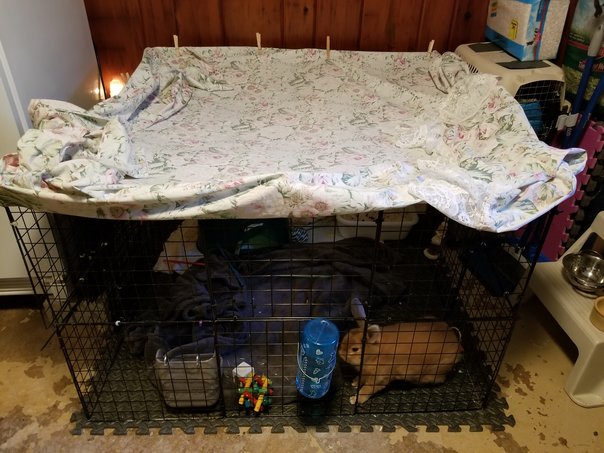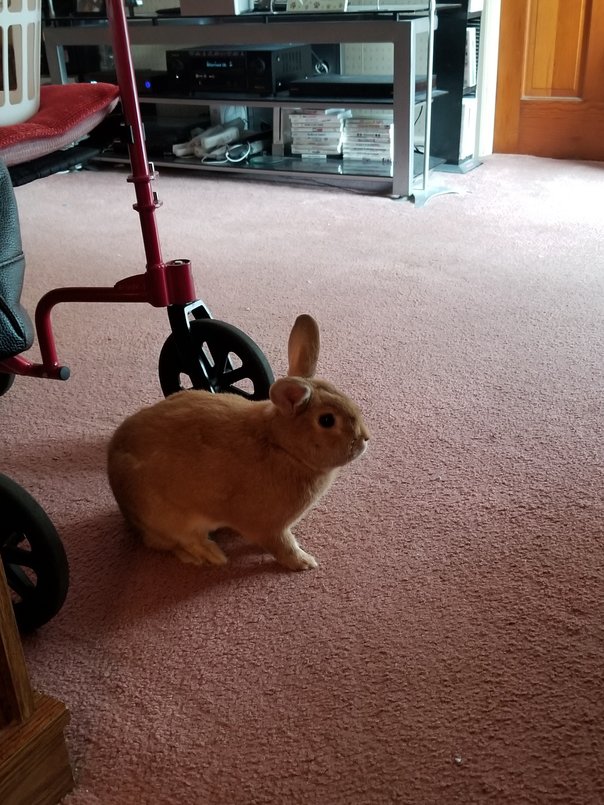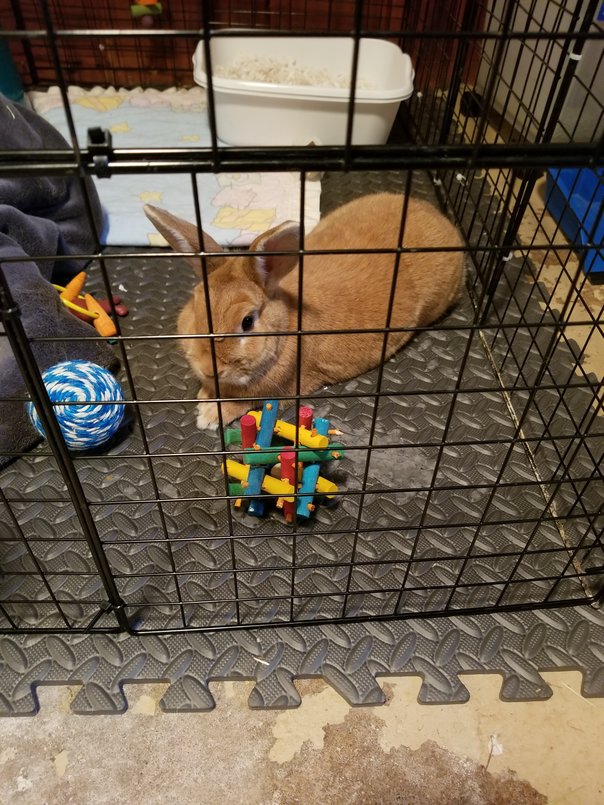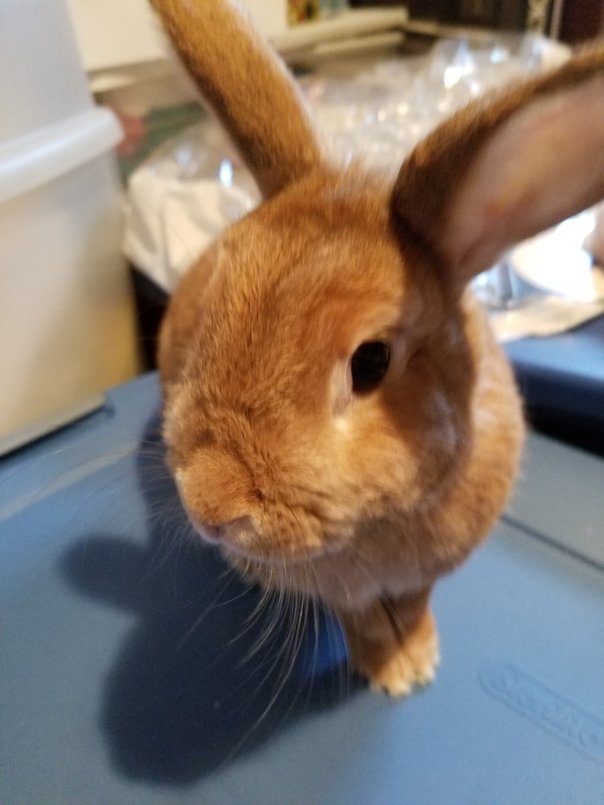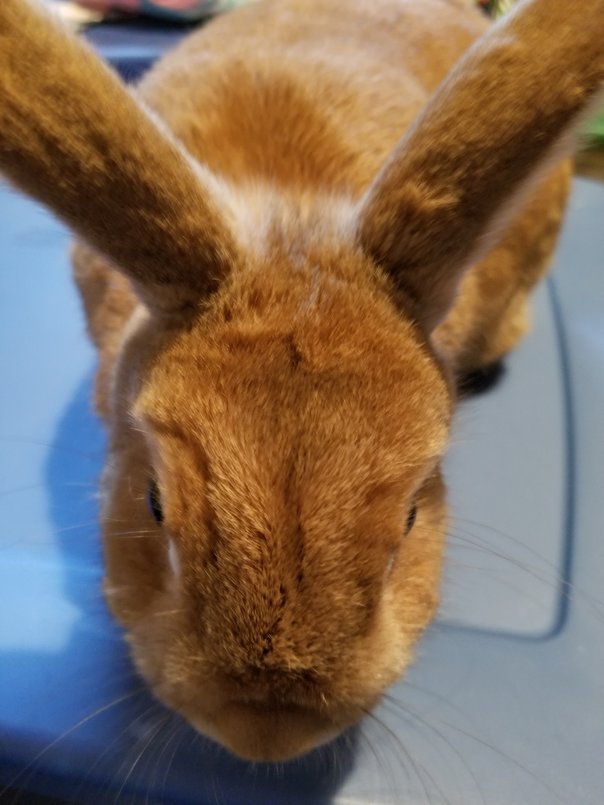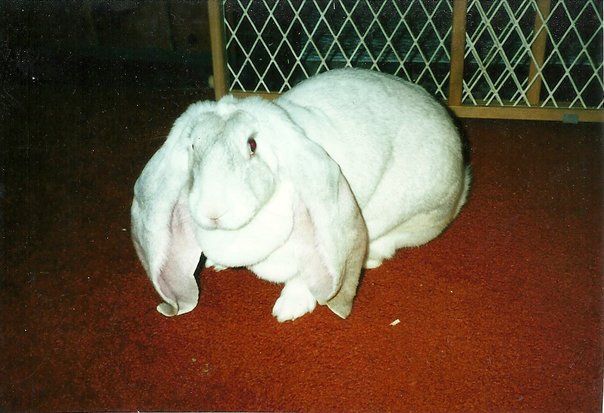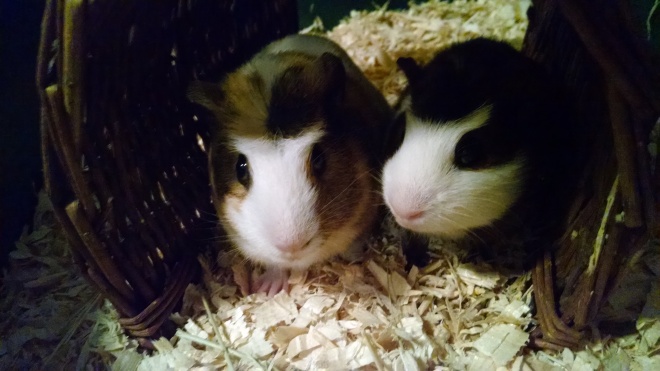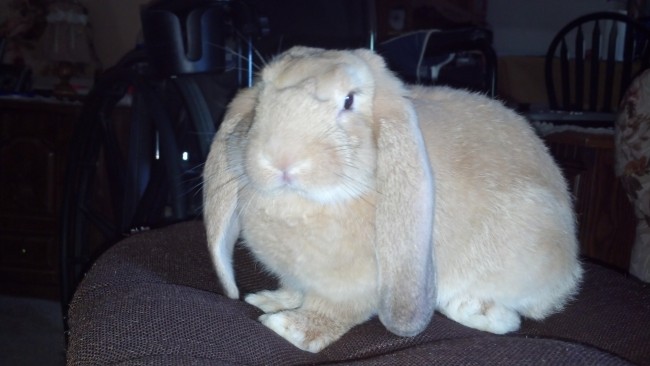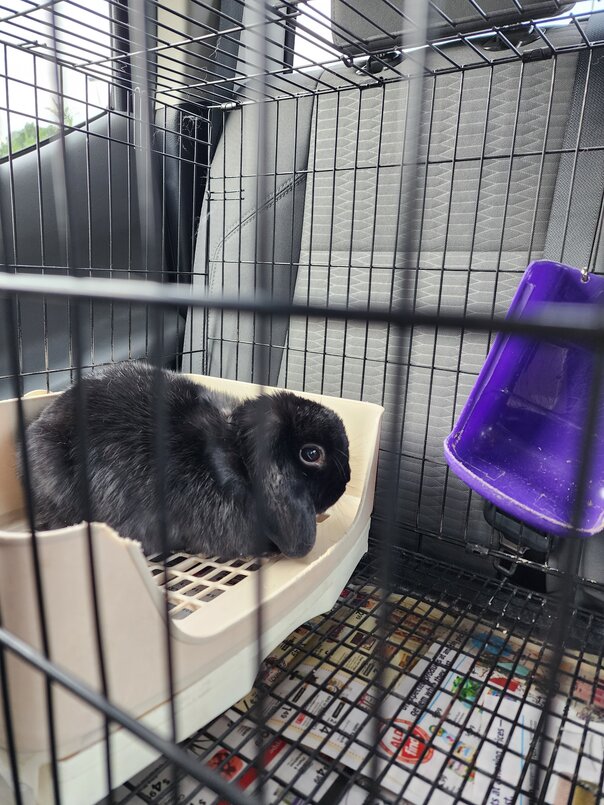
I swore I was done with pocket pets. I said that before Bugs’ arrival, too, and soon he became family. Okay, he was supposed to be the final basement dweller in the house. I have nothing against smaller pets, of course. I’ve had several over the years, but now that I’m older, the cleaning of the littler creatures’ enclosures is no longer as easy as it once was.
Bugs, our resident rabbit, has been with us since before the pandemic. I’m not sure how long we’ve had him, or how old he is. He’s been king of the basement for quite some time since that part of the house is off limits to the other fur kids. Every king needs a queen, right?
Enter her majesty Poppie. She is a five-year-old bunny with a shiny black coat and lop ears. I’m not certain what breed or mix she is; I’m guessing Mini Lop or Holland Lop, but she’s a cutie no matter her parentage. I’ve had several lop-eared rabbit breeds through the years including French Lop, English Lop, and Fuzzy Lop. I think Mini Lop or Holland Lop will be a first for me.
We’re her second home. Because my basement is an unmitigated disaster, her arrival forced me to do some much-needed reorganization of the space where she now resides. She came with a roomy traditional cage, but I have upgraded her digs to an enclosure similar to Bugs’. She is now in a C&C cage (which Google tells me stands for Cubes and Coroplast, which is news to me). The entire setup sits on interlocking foam puzzle pieces on the basement floor. The cage is assembled using grid panels stacked two high. Two panels aren’t tall enough to keep curious buns from hopping out, so to prevent that, a sheet is put over top secured by clothespins. I’ve come home to a missing bun before (ahem, Bugs), and I have no desire to hunt for a hiding cottontail again.
Poppie has all new furnishings including a food dish, water bottle, hay rack, toys, and litterbox. So far, she is good about using her box, which makes cleanup of her space a breeze. I have a long-handled dustpan and brush to sweep out any debris on the floor, and I have found this to be so much easier than vacuuming, which can be scary to the buns. I top off the food, water, and hay, and change the litterbox. Done. If only I had known these setups existed years ago. They are far superior to the old-school wire cages with slide out trays lined with newspaper; the pans always unwieldy to empty. I will never go back to that style of housing again.
Poppie is a sweet girl, enjoying head rubs. She has a healthy appetite, devouring every morsel that lands in her bowl. She enjoys hopping around her enclosure, and it looks like she is settling in well. Even though we had to make room to accommodate her, I am glad that we did. She will spend the rest of her life with us, a member of the family. For some reason, I think I am destined to always have at least one bunny, and as long as I am able, that’s okay with me.
(Poppie arrived in August 2023)

